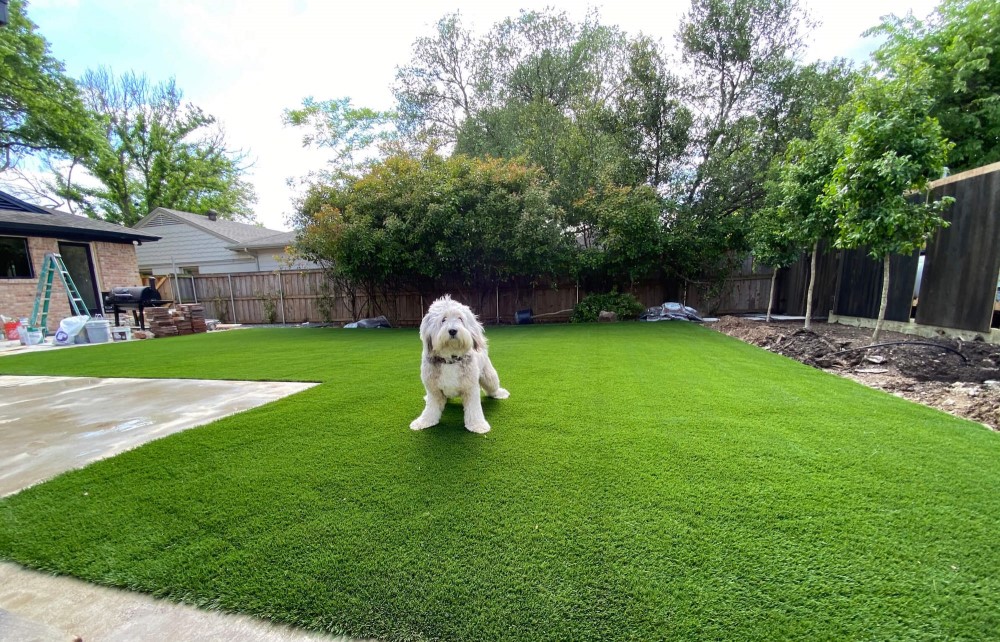Artificial grass, a growing trend in landscaping, is a popular choice among UK homeowners for enhancing gardens and outdoor areas. Known for its low maintenance and appealing look, you might be curious about how to install artificial grass on soil. This article will guide you through the process, highlighting the benefits of this versatile landscaping option.

Advantages of Artificial Grass
Opting for artificial grass in your garden or outdoor space can offer several benefits:
- Low Maintenance: One of the primary advantages of artificial grass is its minimal upkeep. Unlike natural turf, it doesn’t require mowing, pruning, or extensive lawn care, making it ideal for those with busy lifestyles or a dislike for gardening.
- Water Conservation: Artificial grass doesn’t need watering to maintain its green appearance, which is beneficial for the environment and useful during hosepipe bans or water restrictions.
- Eco-Friendly: It’s environmentally friendly due to reduced dependence on lawn maintenance equipment that emits greenhouse gases.
- All-Weather Use: Synthetic turf is resilient against various weather conditions, avoiding the muddy or parched appearance that natural grass suffers.
- Durability: It’s durable and suitable for areas with high foot traffic, making it an excellent choice for sports fields as well as home gardens.
- Aesthetic Appeal: Artificial grass maintains a vibrant appearance without constant upkeep, adding to the beauty of your garden.
- Allergy Reduction: For those with allergies, synthetic turf does not produce pollen, making for a more comfortable outdoor experience.
- Weed Resistance: A weed membrane installed beneath the grass prevents weed growth, reducing the need for herbicides.
- Safe for Pets and Children: Certain artificial grass types are designed to be child and pet-friendly, with features like shock absorbers and odor resistance.
Installing Artificial Grass on Soil
While it’s technically possible to lay artificial grass directly on soil or over existing natural grass, it’s not advisable due to potential unevenness and maintenance issues. Instead, use a sub-base for a more practical and visually appealing result. Below is a step-by-step guide:
- Prepare the Surface: Clear existing lawn down to the soil layer, removing weeds, plants, or debris. Remove topsoil to create room for the sub-base (about 3-4 inches) and level the soil.
- Add the Sub-Base: Choose from various sub-base materials like sand or granite/concrete. Even it out over the soil.
- Install Weed Membrane: Lay the weed membrane either above or below the sub-base to prevent weed growth, securing it to the garden’s edging.
- Lay the Artificial Grass: Cut the grass to fit your garden’s size. Lay it over the weed membrane, ensuring the grass fibers face your property for the best aesthetic result. Trim any excess turf and smooth it out.
- Join the Grass: Align the grass at the seams and use glue, joining tape, or small nails to secure them. Fasten the edges with pins.
Once these steps are completed, your artificial grass is ready to enjoy.
For more home improvement tips and advice, particularly for enhancing gardens and outdoor spaces, explore the wide range of articles available on our website.

